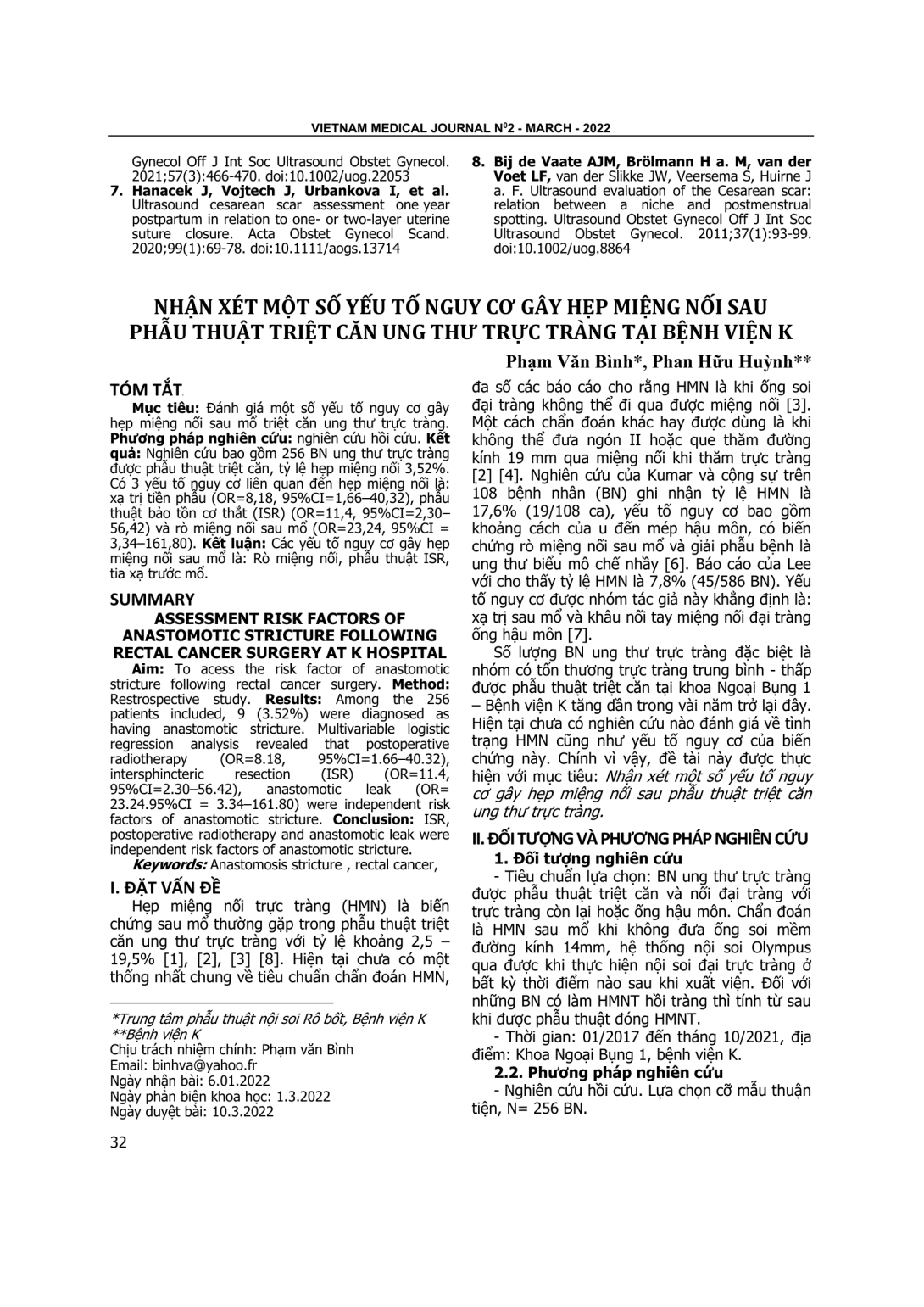
Đánh giá một số yếu tố nguy cơ gây hẹp miệng nối sau mổ triệt căn ung thư trực tràng. Phương pháp nghiên cứu: nghiên cứu hồi cứu. Kết quả: Nghiên cứu bao gồm 256 BN ung thư trực tràng được phẫu thuật triệt căn, tỷ lệ hẹp miệng nối 3,52%. Có 3 yếu tố nguy cơ liên quan đến hẹp miệng nối là: xạ trị tiền phẫu (OR=8,18, 95%CI=1,66–40,32), phẫu thuật bảo tồn cơ thắt (ISR) (OR=11,4, 95%CI=2,30–56,42) và rò miệng nối sau mổ (OR=23,24, 95%CI = 3,34–161,80). Kết luận: Các yếu tố nguy cơ gây hẹp miệng nối sau mổ là: Rò miệng nối, phẫu thuật ISR, tia xạ trước mổ.
To acess the risk factor of anastomotic stricture following rectal cancer surgery. Method: Restrospective study. Results: Among the 256 patients included, 9 (3.52%) were diagnosed as having anastomotic stricture. Multivariable logistic regression analysis revealed that postoperative radiotherapy (OR=8.18, 95%CI=1.66–40.32), intersphincteric resection (ISR) (OR=11.4, 95%CI=2.30–56.42), anastomotic leak (OR= 23.24.95%CI = 3.34–161.80) were independent risk factors of anastomotic stricture. Conclusion: ISR, postoperative radiotherapy and anastomotic leak were independent risk factors of anastomotic stricture.
- Đăng nhập để gửi ý kiến
